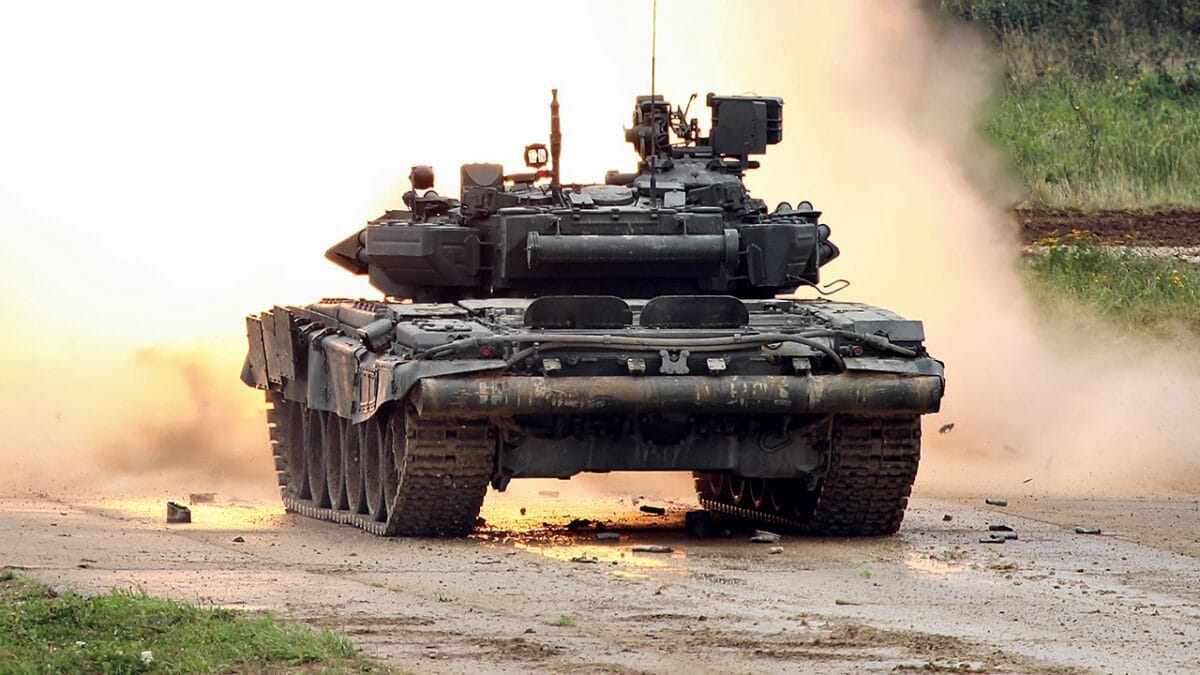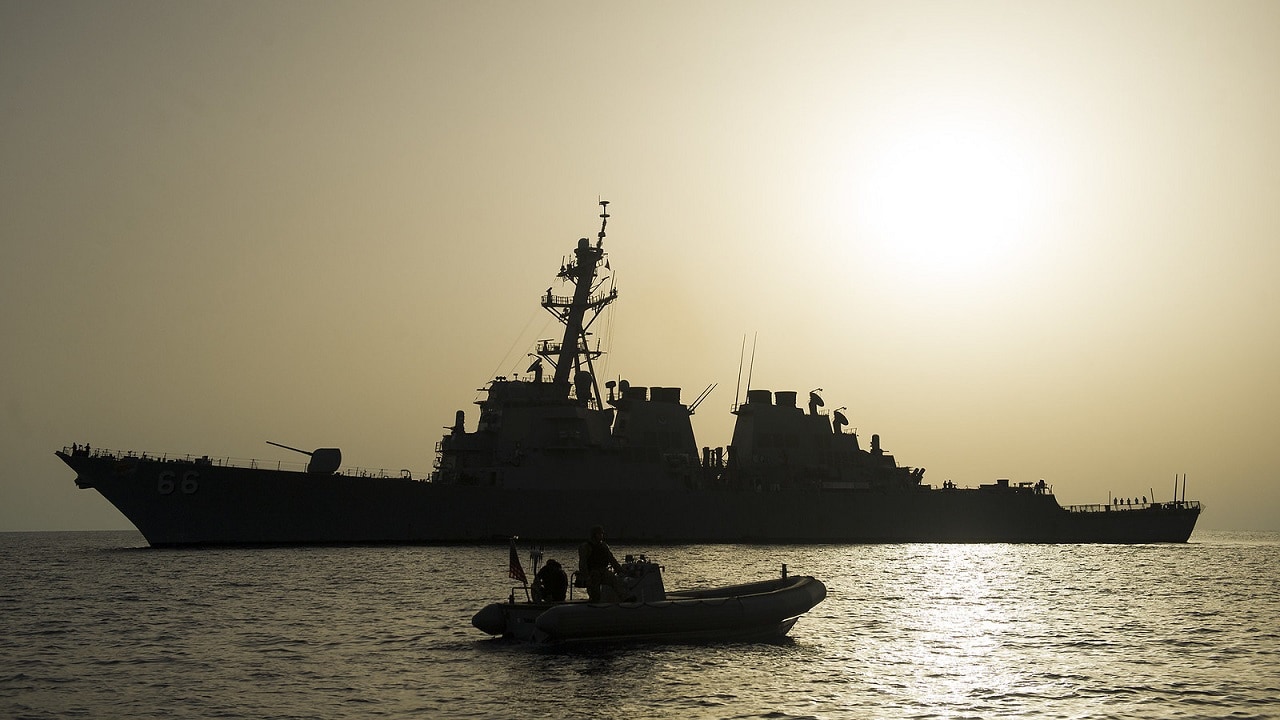Is the era of big warships and armor like tanks about to end? Just for a change, there’s a bit of heat around discussions of the future of armor and surface ships. I thought ASPI analyst William Leben’s recent Strategist piece was a good one in its attempt to find some common ground.
I think a lot of the argument centers on a semantic misunderstanding of what it is for something to be ‘obsolete’. I’ve been guilty of using the word speciously myself, most recently on the subject of surface combatants, when what I really meant was ‘significantly reduced utility. Strictly speaking, no capability is ever entirely useless. There are probably still occasional circumstances in which the crossbow, horse cavalry charge or 16-inch guns of a battleship would still be effective weapons. But those instances are so rare that no one sees the benefit of including them in modern force structures.
Militaries are by their nature conservative organizations that tend to hold onto capabilities that have provided sterling service, often for longer than they really should. (See the first chapter of this book for a good explanation of the phenomenon.) So, weapons systems usually don’t disappear overnight; instead, it happens gradually over time. There were several horse cavalry charges during World War II (and many of them were successful), and the last two Iowa-class battleships (the Missouri and the Wisconsin) took part in shore bombardments during the 1991 Gulf War. There are just more reliable or cost-effective ways to produce those effects these days.
As I pointed out in my piece on surface combatants, there are things they can do that are currently hard to replicate by other means. And the persistent requests from Ukraine for armored vehicles, despite their own success in countering Russian armor to date—Russian vehicle losses so far in this war have likely exceeded those of the Red Army during the first phase of the gigantic Battle of Kursk in 1943—show that we haven’t yet reached the point where armor is ‘obsolete’ under any meaningful definition.
Supporters of the continued acquisition of armor point to poor Russian tactics and the possibility of developing counters to anti-armor systems in future evolutions. Similarly, naval aficionados point out that the Russian navy must have been asleep at the helm to lose a cruiser to a couple of subsonic missiles and a drone. In the spirit of Mark Twain, we might observe that assessments of the demise of armor such as tanks and surface ships are, at least for now, an exaggeration.
But—and anyone who has read much of my stuff knew this was coming—while I accept all of those points, I think both systems are now in the decline phase of their history, and it will only get harder for them from now on. I think that can be understood by looking at some very broad historical trends.
A post of mine during the early days of The Strategist included some historical data for two important military trends. The first is the phenomenal increase in the ability of militaries to deliver lethal force swiftly and precisely. It’s hard to exaggerate how rapid that increase has been—it is well beyond exponential. The result has been a steady, though less mathematically dramatic, decline in the density of combatants on the battlefield, as militaries take a small-target approach through dispersion. Of course, there’s a tension there. Militaries wish to avoid large formations being destroyed by enemy strikes, but also need to concentrate their forces to be able to deliver decisive effects when required.
A certain amount of ‘lumpiness’ in a force structure is acceptable if it can avoid being seen and struck by an adversary for long enough to get the job done, and the ‘fog of war’ allows for that in many instances. Similarly, a lump of capability (a working definition being ‘anything worth an expensive missile’) can be relatively safe if its physical size is less than the typical aiming error of the weapon targeting it. The Ukraine war provides examples of both success and failure in avoiding successful targeting. For example, a single ship—even a stationary one—would be unlucky to be hit by a ballistic missile with a 100-meter uncertainty in its landing point. But when three ships are tied up alongside an important port facility, the odds of such a missile hitting something valuable increase, and taking the shot becomes worthwhile. That seems to have been the fate of a Russian landing ship.
Tanks and ships are inherently lumpy. Up to now, they’ve managed to get by with more or less acceptable loss rates because the offensive weapons they face have generally been just a little too slow in arriving or a little too inaccurate to completely overwhelm the defenses. But it’s also clear that the speed and accuracy of weapons systems are still improving, with the added complication of the ubiquity of drones of various shapes, sizes, and lethality. It’s always possible to develop new defensive systems, but they tend to be more expensive than the weapons they are defending against and they drive up the unit cost of the platforms they protect without providing any additional offensive value.

Russian T-90 Tank. Image Credit: Creative Commons.
All of the elements of the calculus weigh against expensive lumpiness. Like the weapons systems of the past that are now universally agreed to be obsolete, today’s major systems will one day be anachronisms. The only question is when that day will come, and I’d be betting that the 2030s will see the end of armor such as tanks and warships as first-line force elements. I’m tempted to say that they will not disappear with a bang but will gradually fade away—but there will actually be quite a few bangs in the process.
Andrew Davies is a senior fellow at ASPI and former director of ASPI’s defense and strategy program. He previously spent 12 years in the Department of Defence in capability analysis and intelligence.

